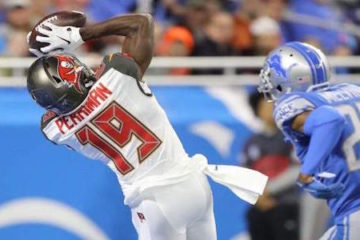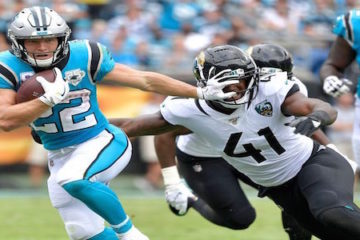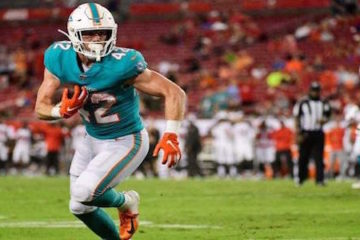2012 Fantasy Baseball: Padres’ Anthony Bass Underowned Value?
Player A: 1 W, 8.89 K/9, 3.23 xFIP (owned in 13% Y!)
Player B: 2 W, 8.53 K/9, 3.28 xFIP (owned in 100% Y!)
Player C: 2 W, 8.34 K/9, 3.28 xFIP (owned in 100% Y!)
I was looking for my followers to try and identify Player A, who was owned in 87% less leagues than Player B (Felix Hernandez) and Player C (Justin Verlander), despite showing slightly better numbers in K/9 and xFIP.
Some of the answers I received: Jason Hammel, James McDonald, Mike Minor, Drew Smyly, Erik Bedard, Aaron Harang and Wade Miley. All of which were respectable guesses.
However, the correct answer was Anthony Bass of the San Diego Padres.
Heading into the 2011 season, Baseball America noted that Bass had one of the best tools of any pitcher in the Padres’ farm system: control. This was justified by Bass’ 2010 performance in Advanced-A, as he led the California League in ERA (3.13) and WHIP (1.09) while posting an above average K/9 (7.41) and excellent walk rate (1.36).
The former fifth round pick from Wayne State University followed up his 2010 effort by making 13 starts for San Antonio of the Texas League (Double-A), going 6-4 with a 3.75 ERA, a 1.19 WHIP, a great K/9 (8.1) and posted an above average BB/9 of 2.71.
Bass’ contract was purchased by the Padres for a spot start in June of 2011, in which he earned his first career major league victory, tossing five strong frames of five-hit ball, striking out one, walking four and surrendering just one earned run. The young right-hander was immediately optioned back to San Antonio, where he made just two appearances before being recalled for good on June 23, 2011.
Working primarily out of the bullpen, Bass saw a significant dip in his strikeouts (4.47/9 despite a 9.3 SwStr%) and an increase in walks (3.91/9), yet maintained a 1.68 ERA (4.62 xFIP). The culprit of the disparity between his ERA and xFIP could be his extreme strand rate of 91.8% compared to the league average 70%-72% , or his .255 average on balls in play. Either way, Bass surrendered just nine earned runs in 48.1 frames, and allowed more than one earned run in just one outing.
Bass’ first two appearances of 2012 came out of the bullpen, but he has since made four consecutive starts for the Friars. Despite the lackluster 1-3 record, Bass’ ERA is sitting at 2.30 (3.23 xFIP), the K/9 is back to 8.89 and the BB/9 have decreased to 3.29. His worst outing to date was a five inning effort at Coors Field against the Rockies, in which he surrendered three earned runs on four hits while striking out seven and walking three. The big blow was a two-run long-ball off the bat of Dexter Fowler.
One obvious element aiding Bass’ early success is his arsenal: four-seam fastball, slider, changeup, two-seamer and cutter. Thanks to our friends at BrooksBaseball.net, we can see Bass has been missing bats primarily with his cutter that tops out at 95-96 mph and his slider that sits at about 88 mph. Bass’ excellent SwStr% (11%) suggests that the K/9 is real, and as long as he continues to mix his pitches and change speeds efficiently, we should see more of the same.
An additional element to consider is the park factor. Bass’ home field, Petco Park, is notoriously known as a pitcher’s best friend. The Padres may as well play their home games at Yellowstone National Park – it’s that challenging for hitters — except Ryan Braun. Although he will theoretically play half of his home games at Petco, the Padres will also play the Giants at AT&T Park, which is one of only two fields that are friendlier to pitchers than Petco.
Fantasy Impact:
Anthony Bass is not, and probably will never be, a number one starter. This is the guy that you can plug-in and expect decent amount of strikeouts and ratio support for your pitching staff.
Many twitter followers asked “how long can we expect him to keep this up?” The simple answer is: time will tell. There isn’t any real evidence of struggle in the minors when a decent sample size is applied. If he continues to induce ground balls (54.4%), limit line drives (11.8%) and play in pitcher friendly parks, I’m going to continue starting him.
If you’re the least bit concerned, stream him at home, or in other pitcher friendly parks until he shows consistency over a larger sample. Although he shouldn't be owned in 100% of leagues a la Verlander and Hernandez, he deserves to be rostered in twelve team mixers and deeper until he proves otherwise.
(April 21, 2012 – Source: Denis Poroy/Getty Images North America)






